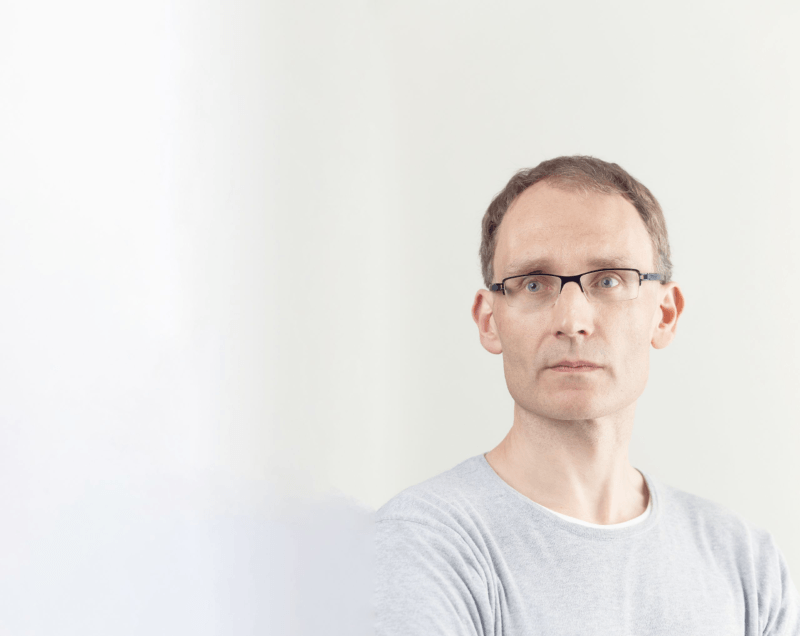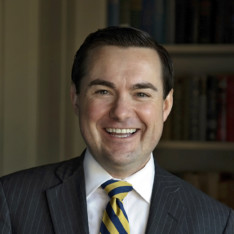Was Lockdown Architect and Theoretical Physicist Neil Ferguson Morally Right To Defy the Lockdown?

Theoretical physicist Neil Ferguson is a vice dean at Imperial College of London and one of the main architects of our current lockdown. Ferguson rose to fame in 2005 when he predicted that up to 200 million people could be killed from the bird flu and acted as the advisor to the British government’s Scientific Advisory Group for Emergencies (SAGE), saying that without lockdown hundreds of thousands of Britons and 2 million Americans would die from COVID-19.
In a February 14, 2020 interview, Ferguson stated, “We need to act now with more intensive interventions to prevent that from happening.” He stated, “I would much prefer to be accused of overreacting than under reacting.”
When comparing this virus to others , he stated: “This virus [Covid-19] is the one which probably concerns me the most.”
On March 16, 2020 he stated, “Suppression is the only viable strategy”
In mid March, the British government listened and changed course announcing the lockdown. The March 17, 2020, British Medical Journal attributes the new policy directly to Ferguson stating “Covid-19: UK starts social distancing after new model points to 260,000 potential deaths.”
Many people now praise Neil Ferguson as a hero.
The criticism
But many others are now criticizing this theoretical physicist for defying the lockdowns that he so strongly advocated.
In England, the law mandates that all individuals, whether or not they have COVID-19, isolate at home with their families and prohibits non-cohabitating couples from seeing each other.
On May 5, 2020, Ferguson resigned from the Scientific Advisory Group for Emergencies after openly defying the lockdown multiple times in March and April.
People questioned whether Ferguson was exposing his married lover, her husband, her two children, his wife, and his child to COVID-19 after Ferguson had been infected and he continued to see his lover in direct violation of lockdown rules.
Was theoretical physicist Neil Ferguson being reckless?
To answer the question of whether theoretical physicist Neil Ferguson was recklessly exposing two families to COVID-19 after contracting the virus then violating the lockdown, let us spend a couple minutes on the germ theory of disease.
Various types of pathogens or germs exist but the two that most commonly afflict us are bacteria and viruses.
Bacteria are single-celled organisms that live on their own and with a food source can reproduce quickly. Consider the bacteria Salmonella, often found on poultry and eggs. If one consumes raw or undercooked poultry or eggs that have Salmonella on them, one risks a Salmonella infection in one’s gut. Some people die, but one’s body might successfully fight off a bacterial infection on its own, or one can take antibiotics (also referred to as antibacterials) that kill the bacteria and stop the bacterial infection.
After one kills the Salmonella bacteria, the infection is no more. But if one consumes new raw or undercooked poultry or eggs that have Salmonella on it, one will have a new bacterial infection. This is why it is possible to reinfect oneself with strep throat with additional exposure to the bacteria if a colony of strep is thriving on one’s toothbrush.
Viruses are different from bacteria. A virus is alive but cannot live on its own. It needs to get into the cells of another being and from there it can spread to others. The common cold, the flu, and chickenpox are viruses that most of us have had. The germ gets into one’s body, reproduces, and then travels through the air or through contact to look for other hosts to spread more.
With those specific viruses, one’s body works to fight off and kill the virus. If successful, one’s body notices the viruses invading the cells and creates antibodies to attack the virus. One’s body works to create specific proteins to bind to the virus and lock down the virus and prevent it from continuing to live and spread.
After one’s body fights off a cold, the flu, or chickenpox one’s body retains those antibodies in one’s blood and if one’s body is exposed to those viruses again one’s body immediately stops it. One is now immune. The more people who are immune make it more difficult for the virus to find new hosts. This is called community immunity, social immunity, or herd immunity. Without being able to find new victims, most remaining viruses die on their own.
Another way to hasten community immunity or herd immunity is through a vaccine. A successful vaccine exposes one’s body to elements of a virus but not the living virus itself. Here one’s body develops antibodies to fight that virus without actually having to fend off an infection from the living virus. When the virus shows up, one’s body is already prepared and the virus is thwarted.
Now, viruses are always reproducing and genetically evolving and a year later a descendant of the original virus might be different enough to infect us. Quite often, but not always, that new variant is weaker and our body can more easily fight off that different virus. The flu that lives with us in 2020 is different but is likely descended from the Spanish flu from just over a century ago.
COVID-19 is a novel coronavirus that our bodies have not been exposed to and fought off before. It certainly will not have the exact same degree of lethality or contagiousness as all coronaviruses differ somewhat. But unless we have scientific evidence otherwise, it will almost certainly have some similarities to other coronaviruses in terms of how it is spread and how our bodies attempt to fight it off through antibodies.
Researchers can see if one has had and successfully fought off COVID-19 through serology blood tests when they find COVID-19 antibodies in one’s blood. As of May 2, 2020, the governor of New York reported that the results of a serology test of 15,000 New Yorkers found that 19.9 percent of New York City residents and 12.3 percent of New Yorkers statewide already had been infected with and successfully fought off COVID-19.
That means of the 20 million New Yorkers about 2.5 million have already had and successfully fought off COVID-19. Among the unfortunate, as of mid-May nearly 25,000 New Yorkers have COVID-related deaths, meaning that one out of a hundred New Yorkers who got the virus are no longer with us.
But according to Dr. Deborah Birx of the COVID-19 Task Force, “The peace of mind that would come from knowing that you already were infected, you have the antibody, you’re safe from reinfection 99.9% of the time.” The Wall Street Journal has a very detailed discussion of this question in their article: “Can You Get Covid-19 Twice? The Latest Science on One of the Most Vexing Coronavirus Questions”
Was theoretical physicist Neil Ferguson reckless with the lives of his married lover, her husband, her two children, his wife, and his child?
On March 19, 2020, Ferguson tested positive for COVID-19 and went into self-isolation. Most reports indicate that people who get infected with COVID-19 are asymptomatic for a few days (or even the entire time), then the conditions can worsen or one’s body can successfully fight off the coronavirus within ten days. Among those who fight off the virus, after the ten-day period, one’s body is still recuperating but the virus is gone. From then on one has antibodies that block any exposures to the virus, and one now cannot give it to others.
This brings us to Neil Ferguson.
On March 30, 2020, Neil Ferguson considered it safe to meet his married lover in defiance of the lockdown.
So 11 days after testing positive for COVID-19, Ferguson noticed he no longer had symptoms, he had fought off the disease, and he was no longer contagious.
Following all scientific knowledge of how coronaviruses work, he exercised his judgement and decided that he could not infect his lover.
He was so sure of this science that he decided he could do so without putting his married lover, her husband, or her children at risk.
He was also sure that if she had COVID-19, he could not get it a second time and thus he would not be putting his wife and child at risk by defying the lockdown.
Thus defying the lockdown was entirely reasonable.
Ferguson clearly stated, “I acted in the belief that I was immune, having tested positive for coronavirus, and completely isolated myself for almost two weeks after developing symptoms.
If he thought there was any risk that he would have exposed his lover, her husband, her children, his wife, and his child to the coronavirus he would have declined to see her.
The verdict
Lockdown architect, theoretical physicist Neil Ferguson, was morally right to defy the lockdown
Even though the law of the land that he advocated stated that non-cohabitating couples were prohibited from seeing each other, Ferguson recognized that people who get and successfully fend off coronavirus have antibodies and are no longer contagious.
Ferguson was in no way putting others at risk when he was free from the disease and thus was morally justified in defying the lockdown.
He also realized that the then two-week old lockdown was causing trauma to his lover.
On March 31, 2020, Ferguson’s lover stated the lockdown had created “a strain” on her marriage stating: “I think our first week had some really good days, some days where everyone was shouting at each other and, yeah, the prospect of doing this for several months it doesn’t seem awful, but it seems like quite a serious challenge to be doing.” She noted, “This is only week two of school being closed.”
Most people are not accustomed to locking themselves in their homes for two weeks so the need to get out is normal. Few people predicted the widespread moral havoc or massive economic chaos that would ensue after locking everyone in their home.
So Ferguson was acting normally and safely when he defied the lockdown. Our verdict is that he was morally justified to defy the lockdown orders.
A separate question is whether theoretical physicist Neil Ferguson’s lockdown mandates should not apply to him but apply to everyone else.










